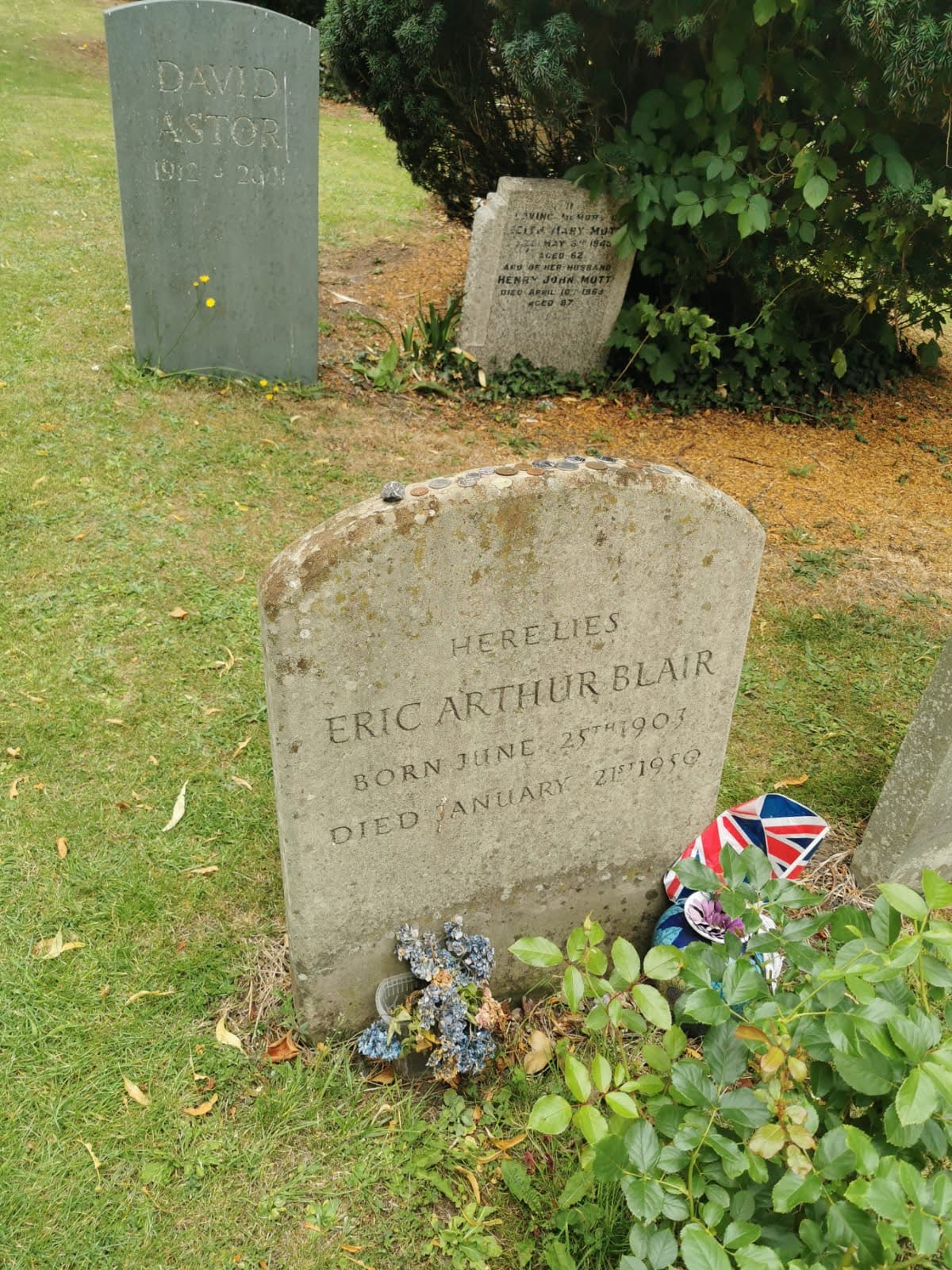The catalogue of newspaper editor and philanthropist David Astor is now complete and available online via Bodleian Archives and Manuscripts.
In the middle of July I took a trip to the village of Sutton Courtenay –it was a sunny day, lockdown and there was not much else I could think of doing. Besides, I’d been meaning to visit for a while. I’d heard that George Orwell was buried in the churchyard there. How Orwell came to be buried in Sutton Courtenay is quite a well-known story – Orwell wanted to be buried in the nearest Church of England cemetery to where he died, but finding there were none in central London with any space, his family appealed to his friends for help, and David Astor, who lived in Sutton Courtenay stepped up. And as it happens, Astor is now buried just behind his friend.
Orwell was one of many writers who, though not strictly journalists, were recruited by Astor to write for The Observer, but as you can see their friendship extended beyond the literary. When Orwell was suffering from a bout of tuberculosis and was recommended clean air by doctors, Astor arranged for him to stay on the island of Jura, a place where the Astor family had large estates and where David Astor had spent many childhood holidays. It was while staying on Jura that Orwell wrote 1984.
George Orwell is certainly not the only big name to crop up in the David Astor archive – going through his correspondents is almost like reading Who’s Who, including, of course a large amount of correspondence with his mother Nancy Astor, the first woman to take a seat in Parliament. There is, however, a definite lean towards Astor’s philanthropic interests. Members of the anti-apartheid movement feature heavily, especially the noted campaigner Michael Scott, and of course Nelson Mandela.
It’s not just the famous in this archive though, but also the infamous. Astor’s great interest in prison reform led him to become, along with Lord Longford, one of the most high profile campaigners for the release of “Moors murderer” Myra Hindley. Though the campaign to get her parole – or at least an end date for her sentence – was ultimately unsuccessful, Astor and Hindley corresponded regularly up until Astor’s death in 2001. He clearly found her letters indicative of her reformed character. Whether others will – well, they’ll have to read them to judge them.

I lived in Sutton Courtenay from the late fifties. I recently published a book ‘From Magic to Mania – a Bipolar Journey’. The first chapter is about the village including its history. It was whilst researching the book that I discovered one little known fact. David Astor’s headstone does not mark his grave. That information came from Richard Blair Orwell’s son. According to the incumbent vicar he was cremated and his ashes scattered in the grounds of the Manor House Sutton Courtenay his home for the previous 56 years. His widow Bridget had the stone installed. I have been unable to find out why it was made to look like a headstone at the head of a grave behind his great friend Eric Arthur Blair aka George Orwell
I was living in Sutton Courtenay in the 1980s and recall that when 1984 came around, the village got excited about how the grave of George Orwell was to be appropriately signposted for the many expected visitors. In the event, after much discussion, a hand-painted cardboard sign was tied with a bit of string to the gate of the churchyard! I am sure old Eric would have approved … as he said: “The essence of being human is that one does not seek perfection”.